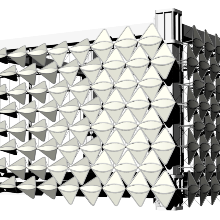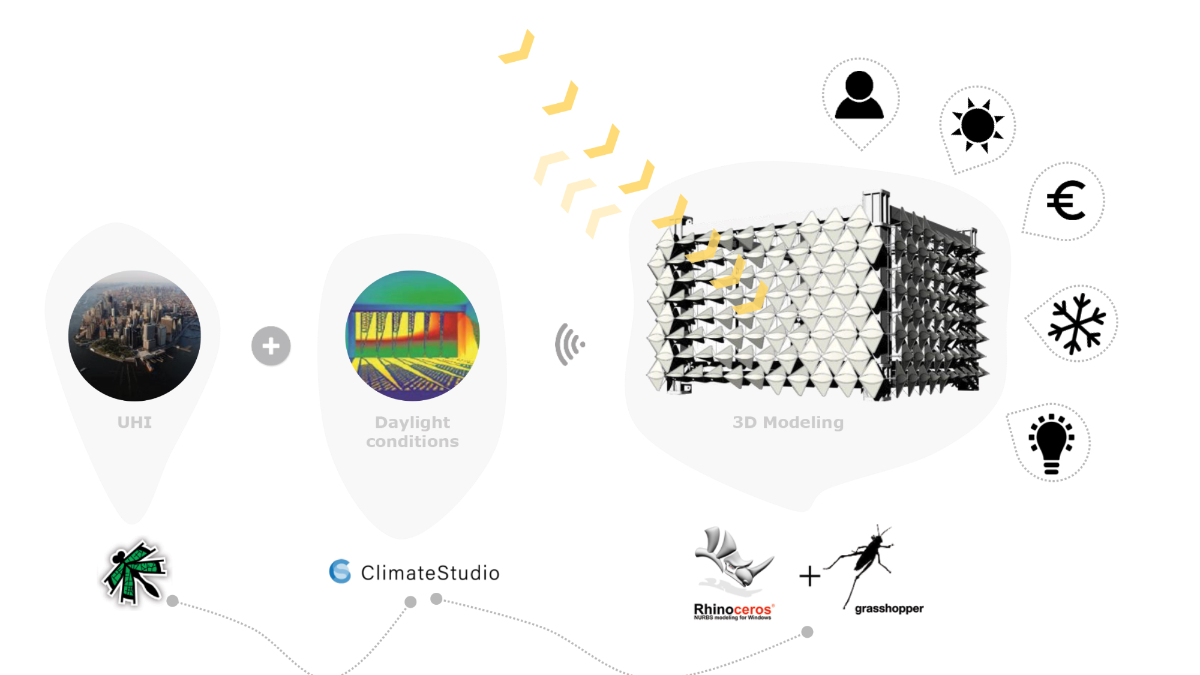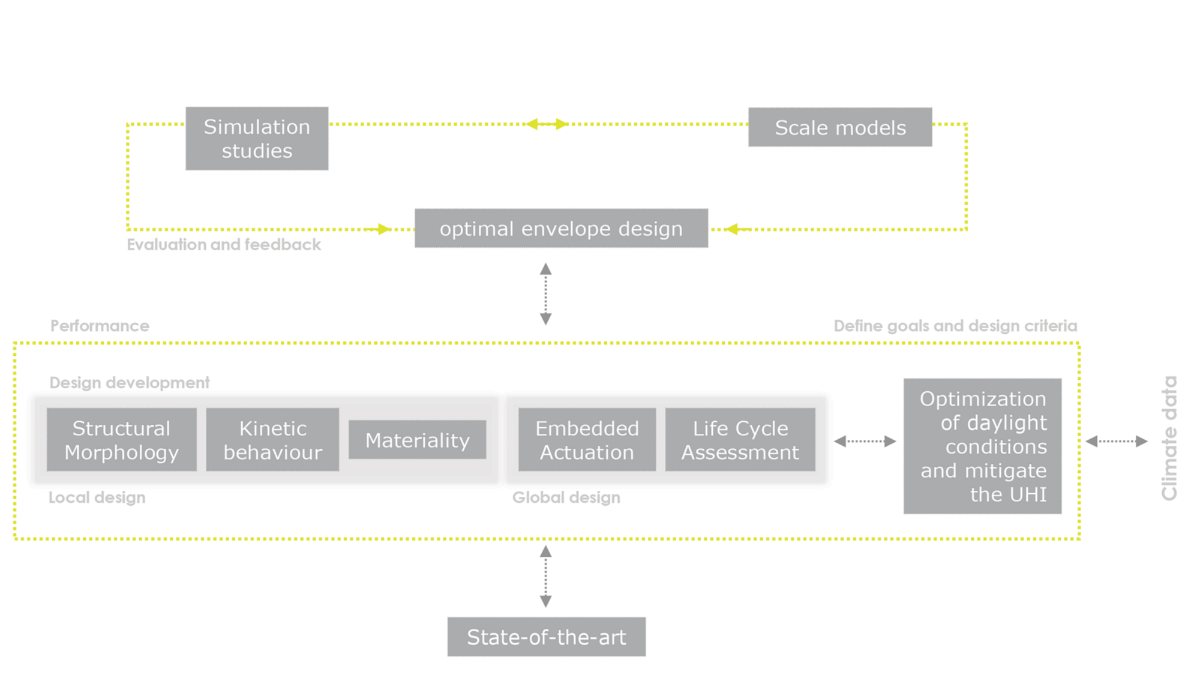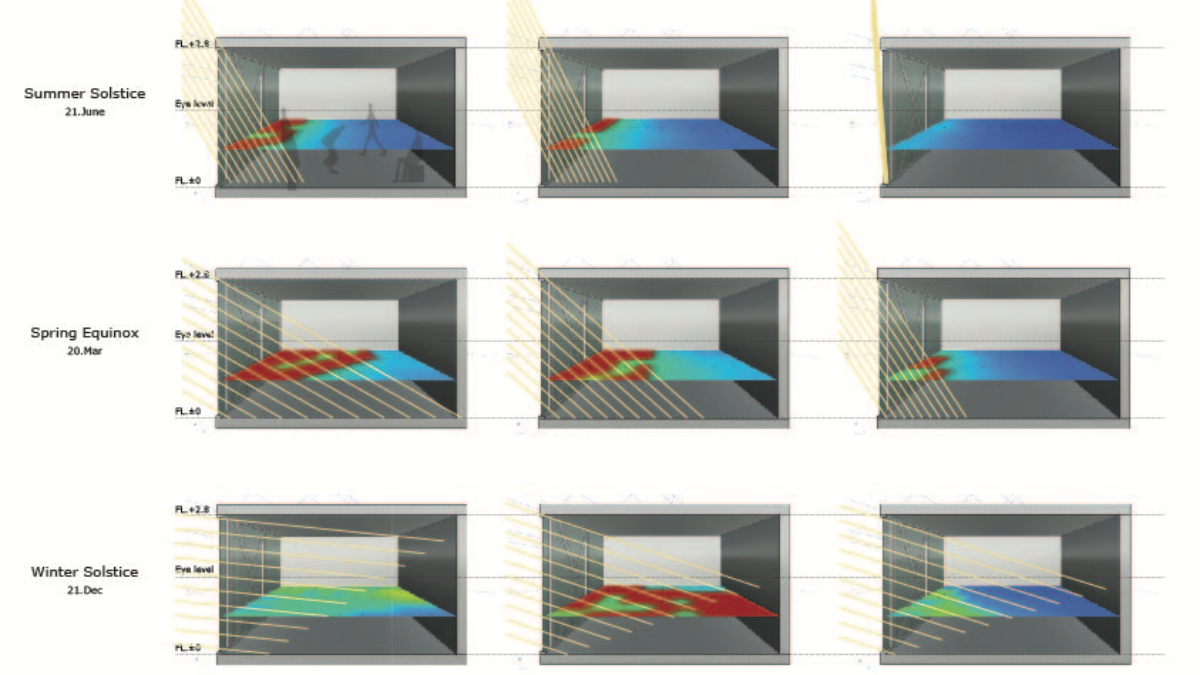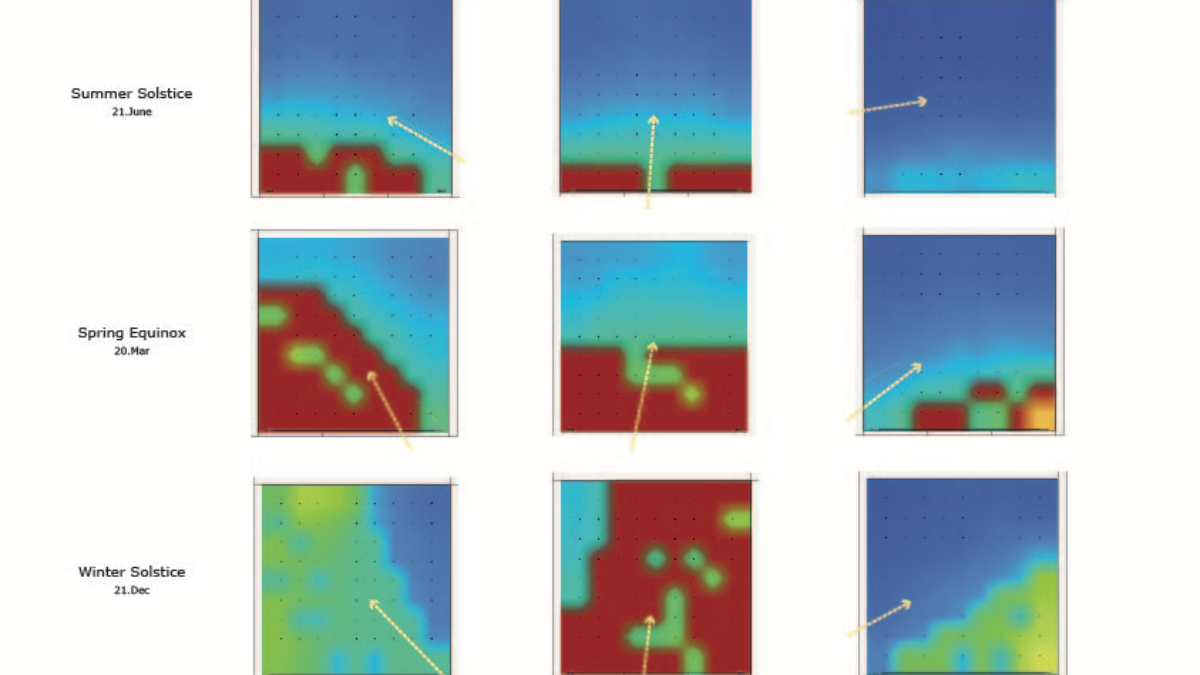Funding Phase II
The research subproject A07 investigates the potentials of an adaptive kinetic envelope to exhibit an effective and robust reconfiguration in real-time while embracing aesthetic qualities. The aim of this subproject is to increase user comfort and to mitigate unwanted solar heat gain in the urban environment. Thus, it contributes to the improvement of the urban climate as well as to the building energy performance.
A vital role of this subproject is the synergistic approach of architecture and engineering in which based on the interoperability of the adaptive kinetic envelope and its ability to reconfigure its geometry and physical properties in real-time. In subproject A07, interdisciplinary investigations and developments on facades will be carried out, which seeks to integrate both technical and aesthetic aspects and an exchange with the other subprojects (especially A02, A03, C01). The focus is not only on the technical feasibility and the potential of shape-controlled adaptive envelopes; it is also important to bring out architectural aesthetic insights into the kinetics of the elements. The fact that this reduces the reflection of radiation into the urban space and thus mitigates the heat island effect in urban environments is an aspect that redefines architecture in the urban context. In addition, the responsive movement of such façade elements and modules produces aesthetic effects and perceptions that are reflected inwards and outwards in the urban space.
Specifically, the daylight conditions within the building and the prevention of solar radiation reflected on the façade in the urban space can be achieved by using different switchable surfaces and their reorientation. In order to achieve standardization and modularity, the adaptive envelope consists of modules system with integrated kinematics and embedded actuation. From this perspective, the adaptation of the system is achieved by kinematic elements, whose surfaces are provided with retroreflective, thermochromic or electrochromic materials in order to be able to optimally adjust their properties with respect to reflection, absorption and transmission of solar radiation. Further investigations refer to experimental prototype tests in scale of 1:5 and 1:1 in order to evaluate and validate the functionality of the proposed adaptive kinetic envelope. To enhance the investigations at the building level, the 1:1 adaptive kinetic envelope will be manufactured and installed in one floor of the high-rise Demonstrator. The fact that the microstructure, colour and surfaces’ changeability contribute to the adaptive multifunctionality and aesthetics of the façade, distinguishes this research from other current approaches which are usually limited to an adaptive function.
Subproject Leader
-
Jun.-Prof. Dr.-Ing. Maria Matheou
Ansprechpersonen

Maria Matheou
Jun.- Prof. Dr. -Ing.Subproject Leader

Moon Young Jeong
Dipl. Arch, MAS ETH DFABDoctoral Researcher


